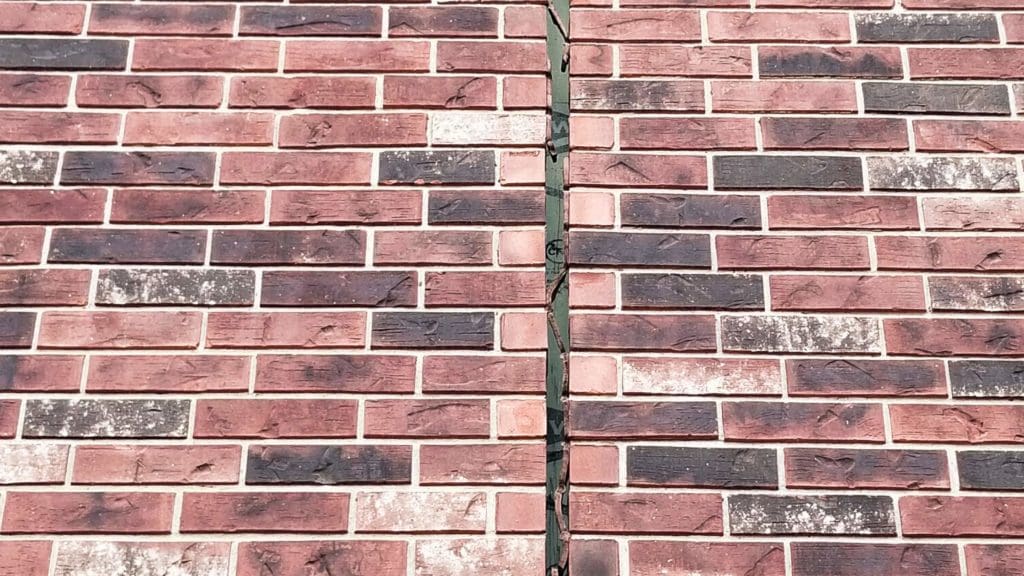Many homeowners never think about their homes’ foundations. However, most of them start to worry when they see any signs of potential foundation issues. Because the cost of foundation repairs can run into thousands of dollars—even more if the problems affect different structural components of the home—knowing how to spot foundation issues before they turn into serious problems can help you prevent costly repairs. To help, our specialists have put together a list of common warning signs you could use to identify foundation damage early.
Cracks and Gaps
Any cracks in your floors, walls, and/or foundation that are wider than one-eighth of an inch are typical indicators of foundation issues. While it’s perfectly normal for a foundation to settle and develop hairline cracks in the first 2-3 years following construction, deeper and/or wider cracks often indicate more serious foundation problems that should be addressed as soon as possible. As well, any gaps between the floor/ceiling and walls, between the cabinets/countertops and walls, and between the garage door and pavement indicate that more dramatic changes are taking place in your foundation. The chimney separating from your home or any cracks developing between the chimney’s foundation and the home’s foundation are two other signs of foundation problems.
Besides their size, the direction of the cracks and gaps are an essential factor you should take into account when examining your foundation, walls, and floors. In general, vertical cracks don’t indicate structural problems. However, if vertical cracks develop in your foundation, they could lead to leaks in your crawlspace, which may result in water damage followed by structural problems and safety hazards in your home. On the other hand, diagonal, horizontal, or stair-step cracks often suggest severe foundation movement that should be looked into as quickly as possible.
Uneven and/or Sagging Floors
An uneven, warped floor or a floor that sags toward the center of your home can be related to foundation problems. When a foundation shifts and sinks in some areas of your home, the home sits unevenly on it. As a result, walls and support beams are pulled apart or compacted, which may cause uneven, warped floors as well as additional structural damage. If you observe that your foundation is suddenly sinking or your floor is sloping or sagging, it’s important to get in touch with a professional contractor that has plenty of experience in addressing this type of foundation damage.
Doors and Windows that Stick or No Longer Open and Close Properly
Sometimes, doors and windows don’t open and close properly when the indoor humidity levels exceed 75%. That could happen within the first few days following heavy rain or flood. In addition, windows and doors may fail to open and close properly because of excess moisture or water leaks in the crawlspace. Other times, however, a door or a window may begin to jam or fail to latch for no apparent reason. But there is a reason: a foundation that shifts could bend frames out of shape, making windows and doors more difficult to open and close.
While the interior doors affected by foundation movement are more likely to drag or stick at the top, exterior doors tend to lean down at the upper corner and drag at the threshold. As well, some windows and doors may look uneven in the wall. As an example, the top right side of a window may be slightly higher than the top left side of it is. Window or door frames pulling away from the walls is another warning sign of foundation damage.
Musty Smell in the Crawlspace
A musty smell in the crawlspace can also indicate potential foundation problems. Although the odor itself cannot cause damage to your home, a musty smell is almost always the first sign of mold infestation. To stop and prevent extensive mold-related damage, it’s essential to determine the root cause of the problem. Typically, mold growth in a crawlspace occurs due to moisture evaporating from the soil into the crawlspace air; water and moisture seeping in through foundation cracks; an improperly graded landscape that allows water to enter and accumulate in the crawlspace; and leaky pipes. Besides damaging the foundation, excess moisture and water in the crawlspace may cause electrical hazards, bowed walls, and wood rot, which could lead to a number of structural problems if left untreated.
In addition to expansive soil, a home’s foundation could be adversely affected by improper drainage, leaks developing under the slab, and tree root intrusions. When it comes to foundation damage, remember that even a small issue can turn into a complex problem that may be more difficult and costly to fix later on. That’s because the longer foundation problems are ignored, the worse they become. So, if you observe any of the aforementioned warning signs of foundation damage or any other unusual things happening, make sure that you consult with an experienced foundation repair contractor in Houston right away!


One Response
Thanks for the suggestion to have your house foundation inspected by professionals when it shows signs of issues. I have a friend who likes the idea of owning a used home and modernizing its outside appearance. I should share this with him so we can find a foundation professional for this someday.